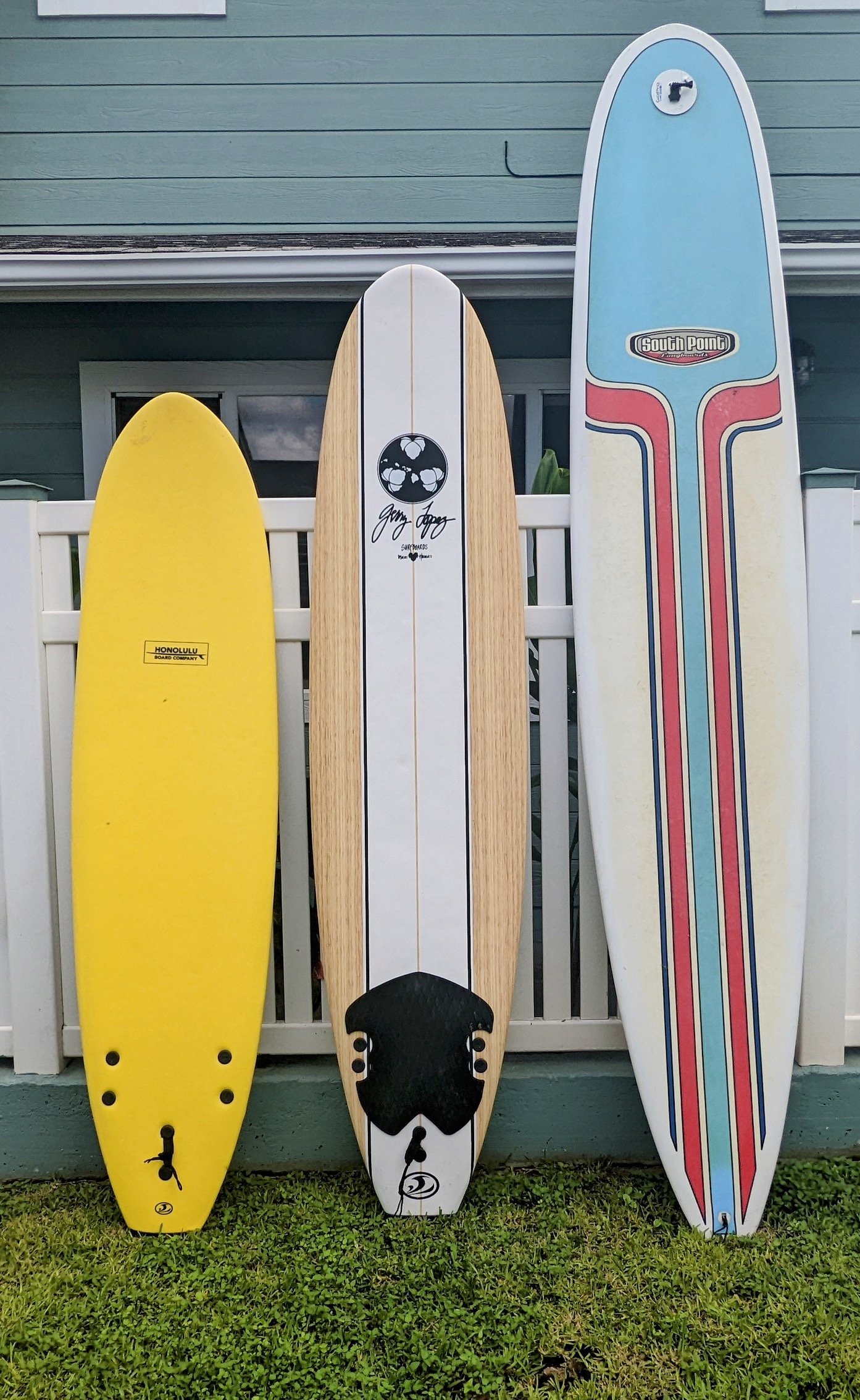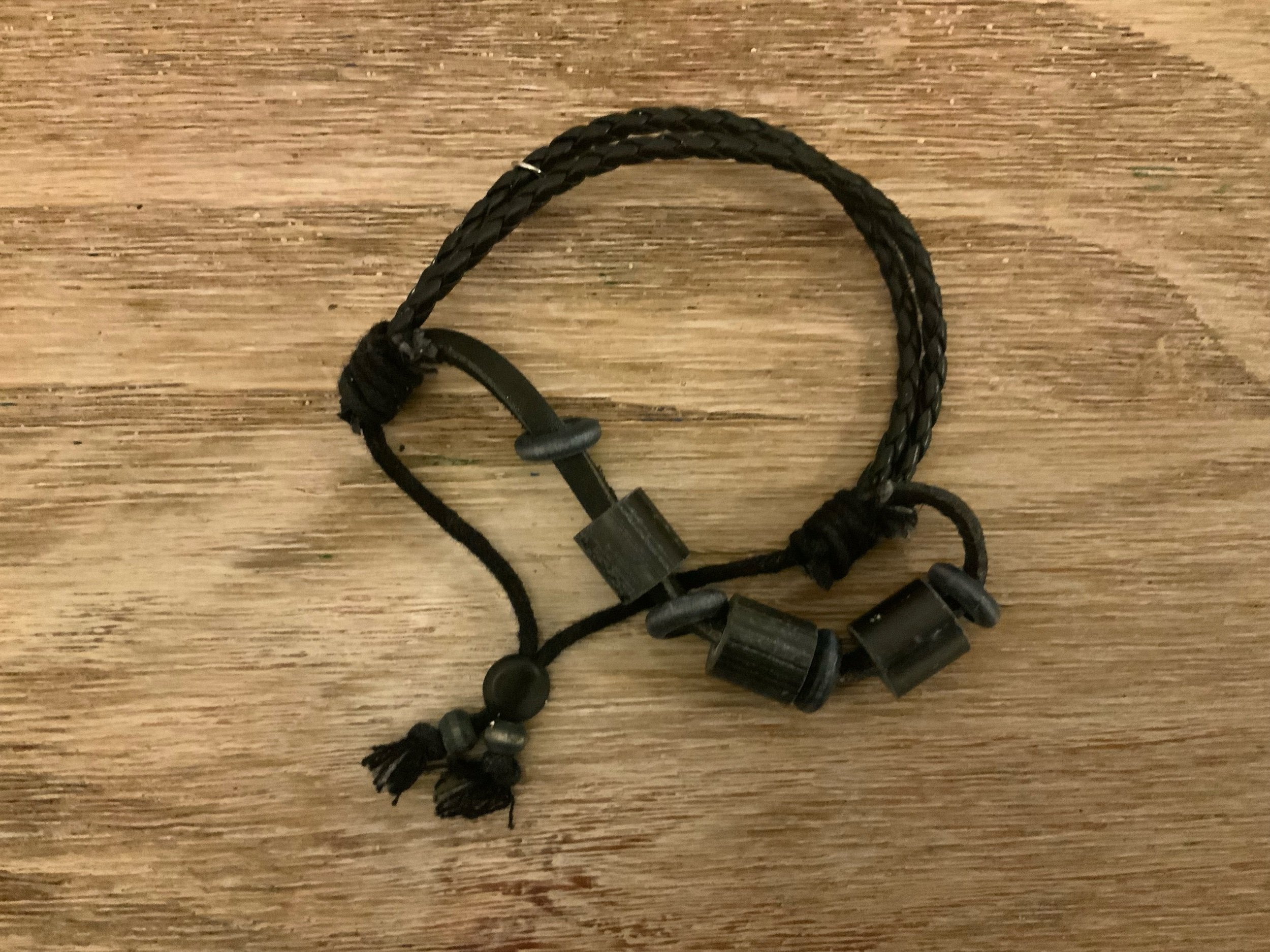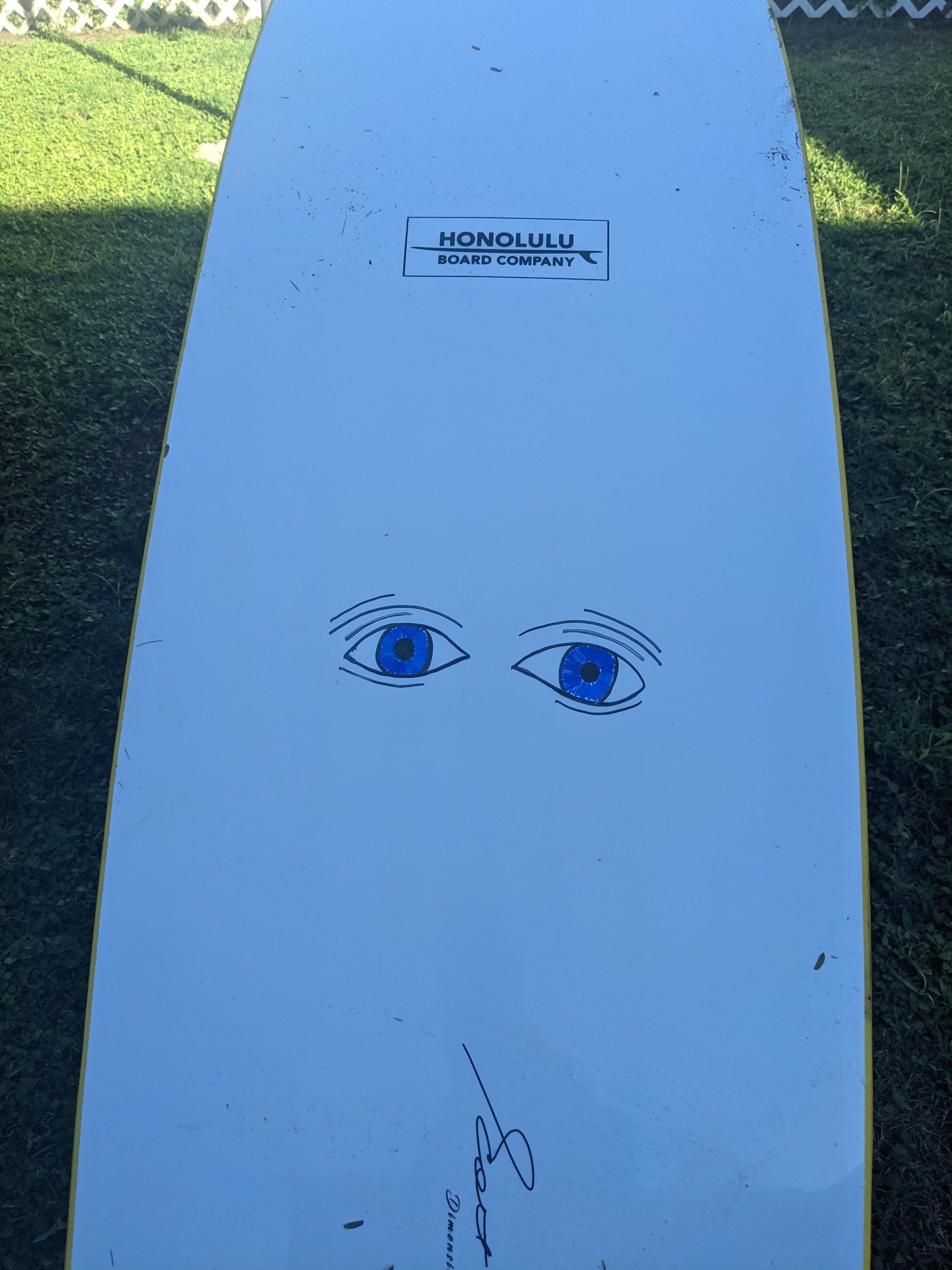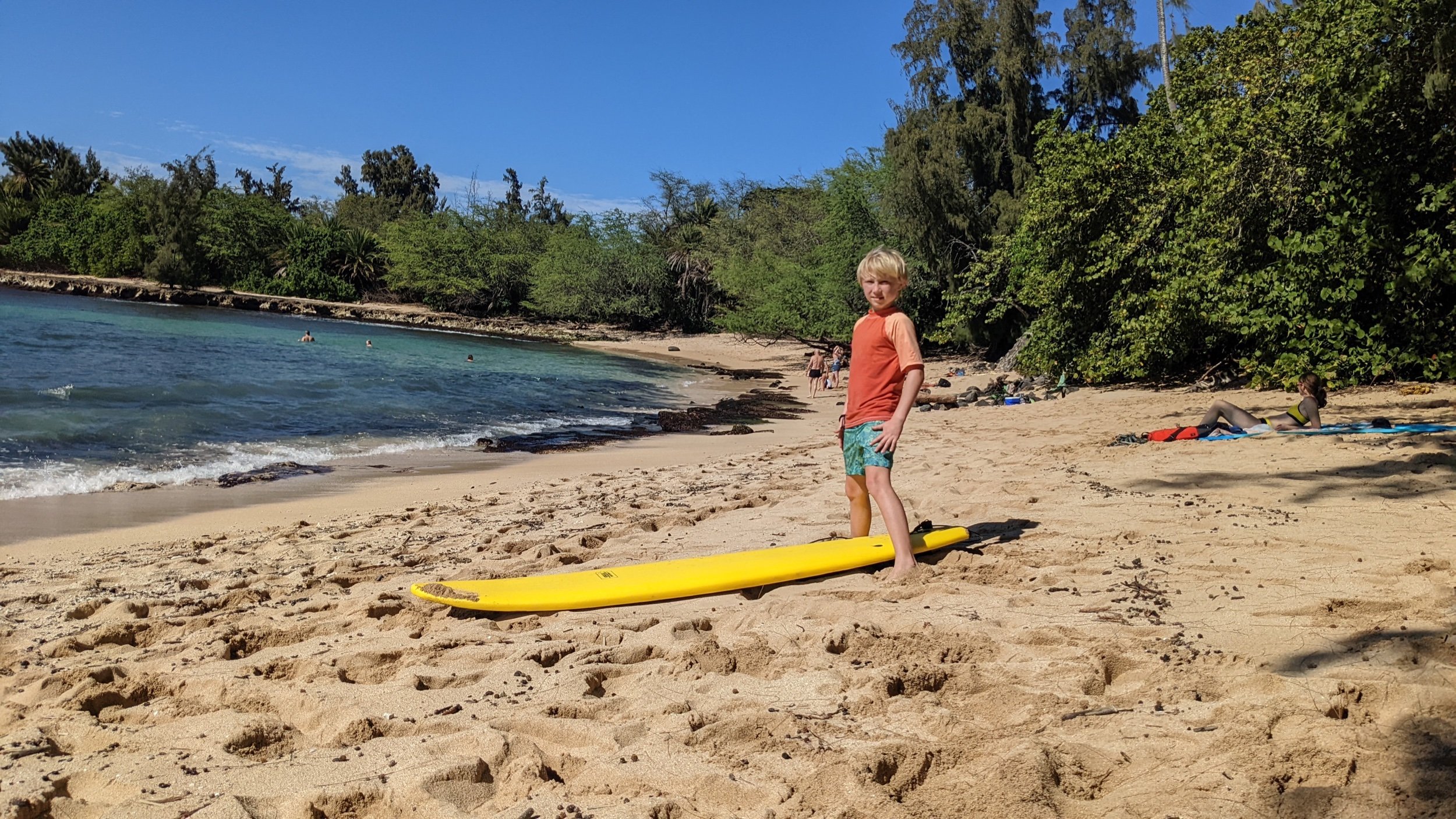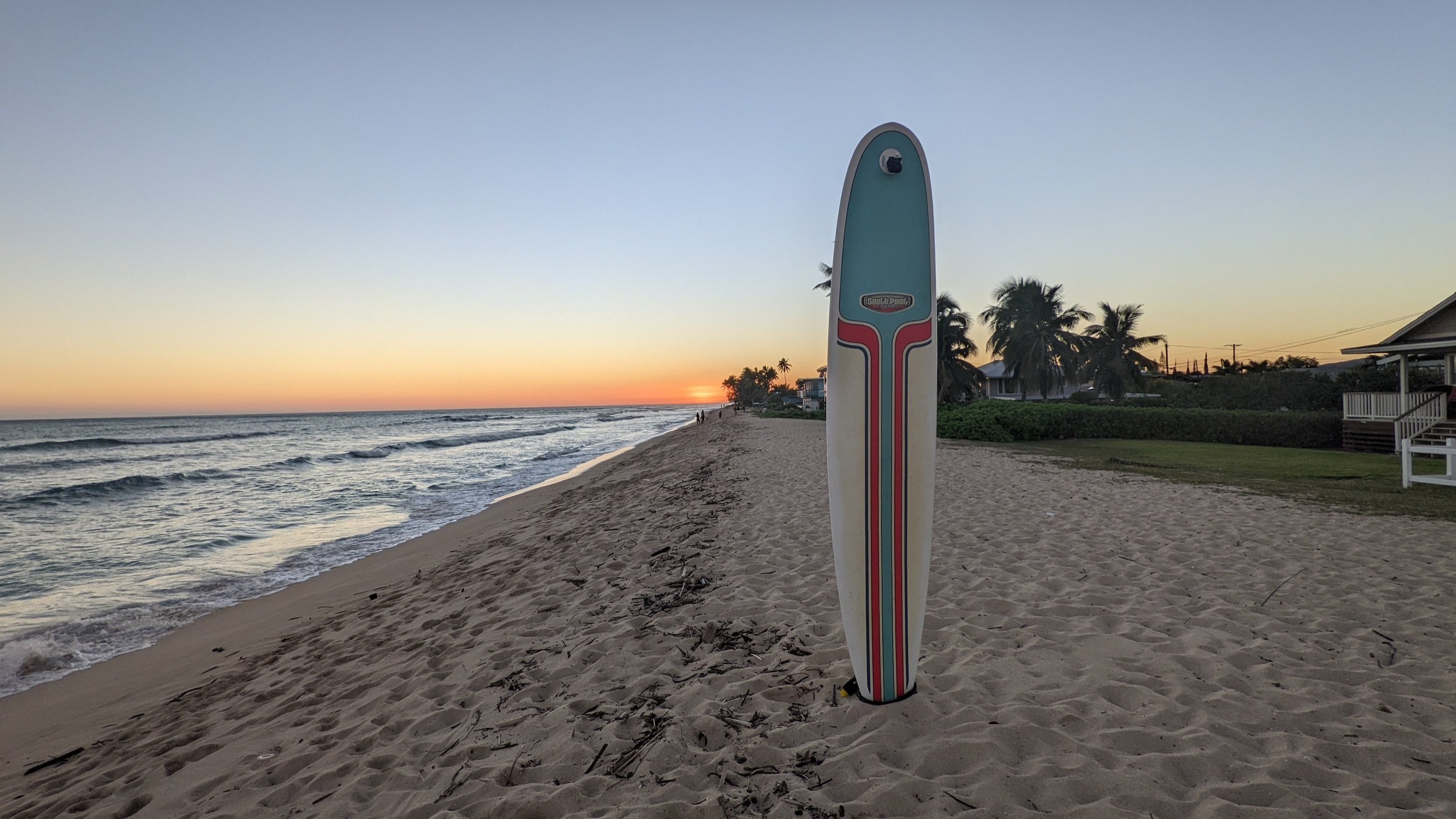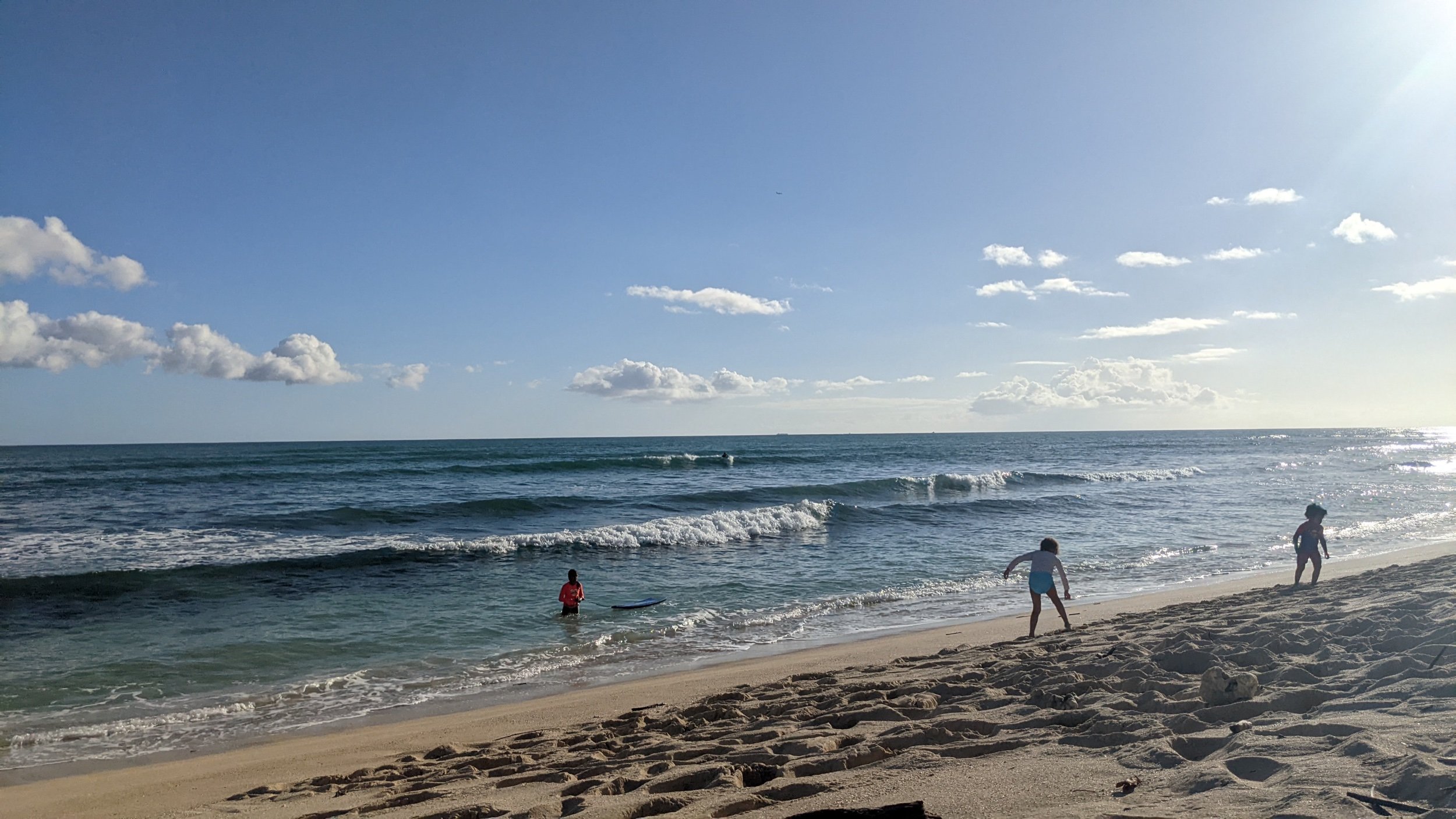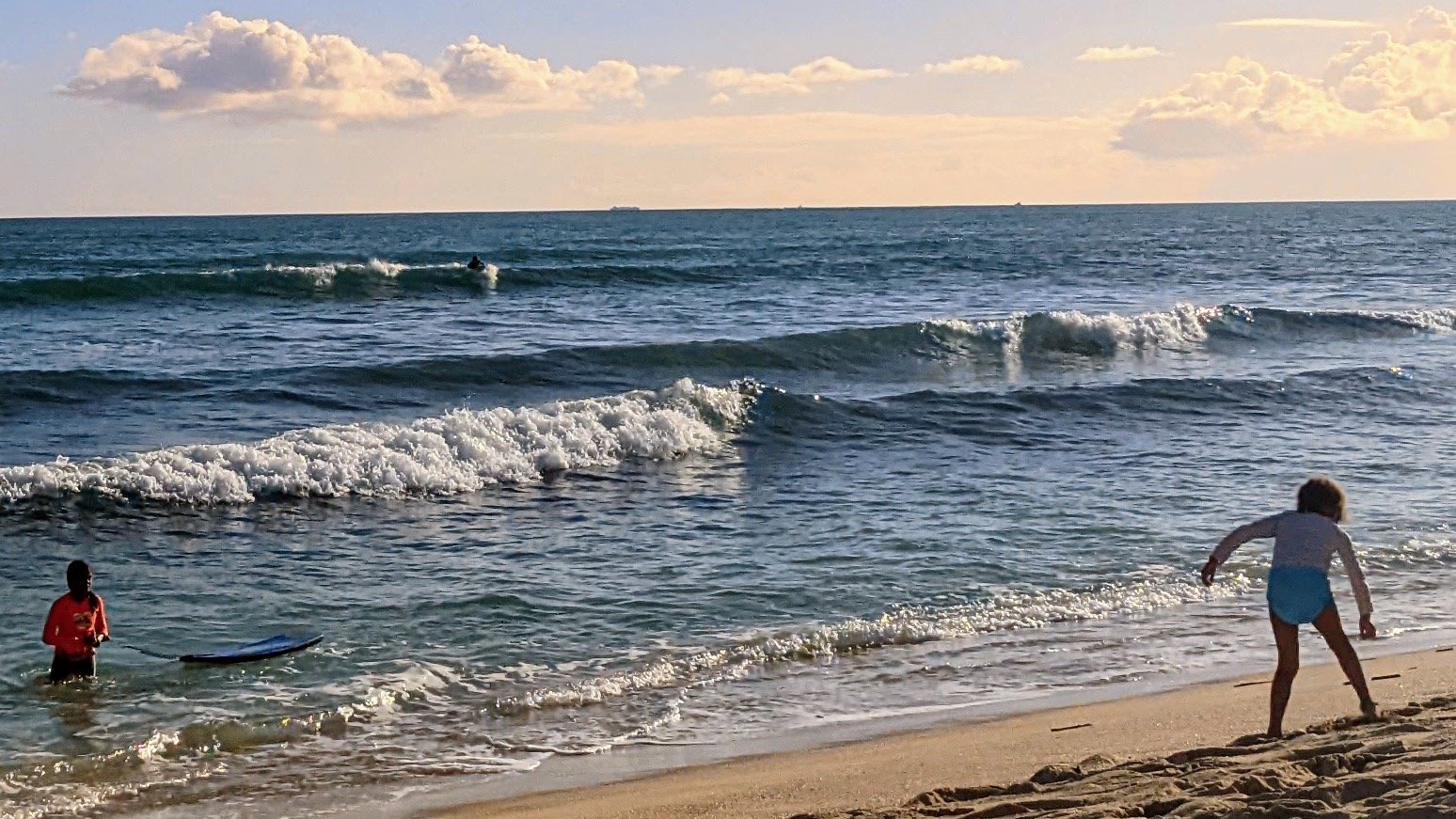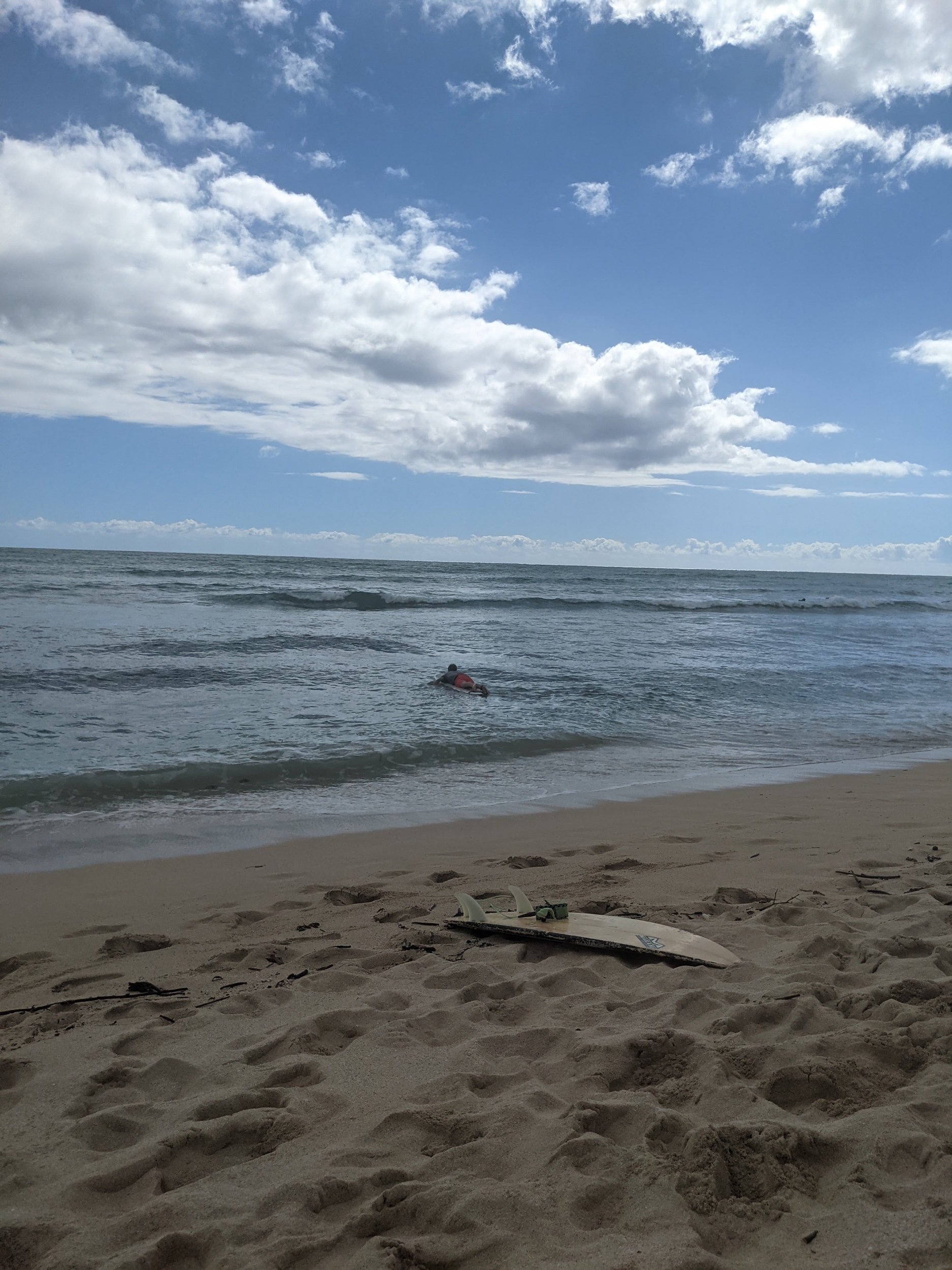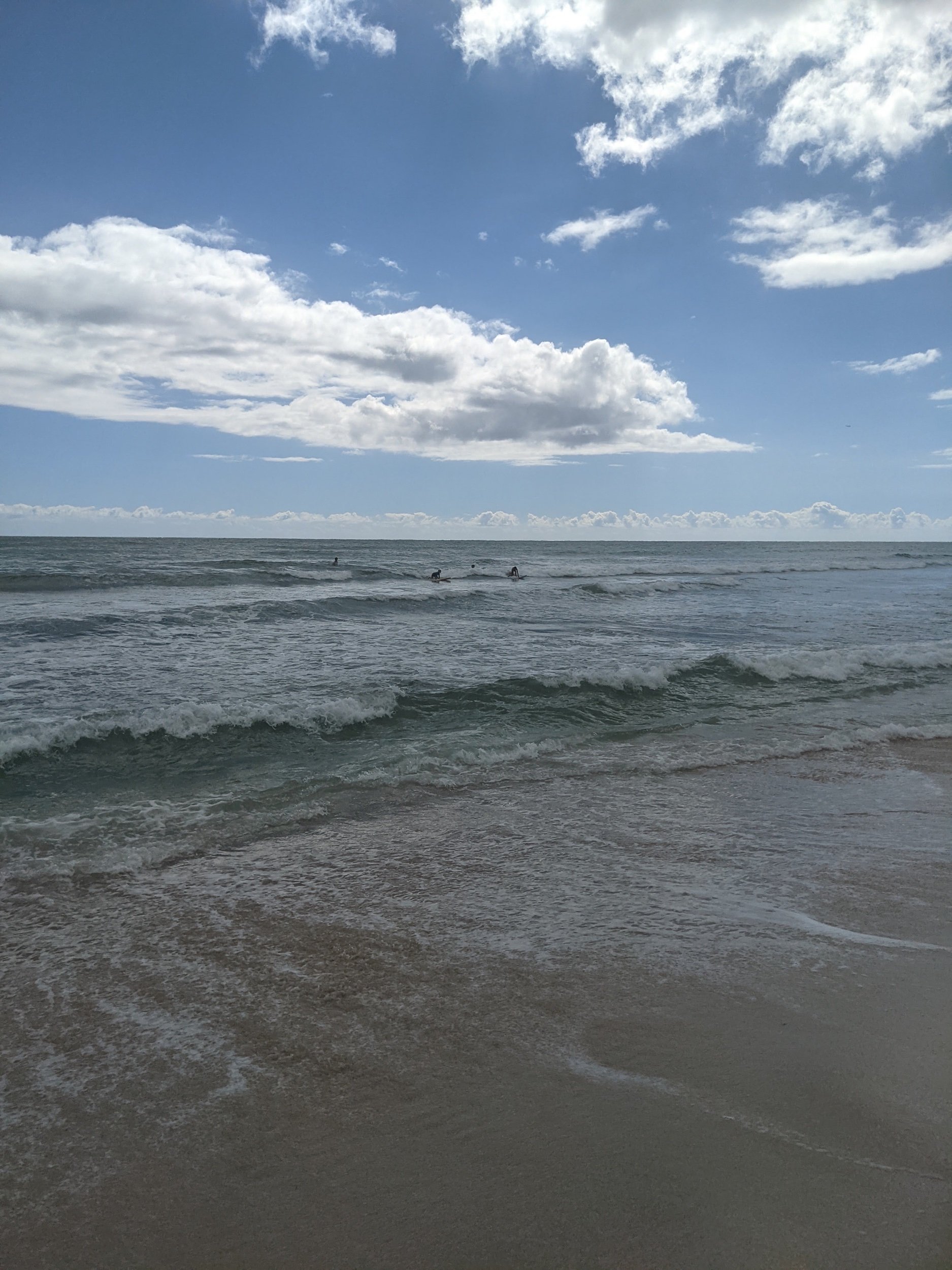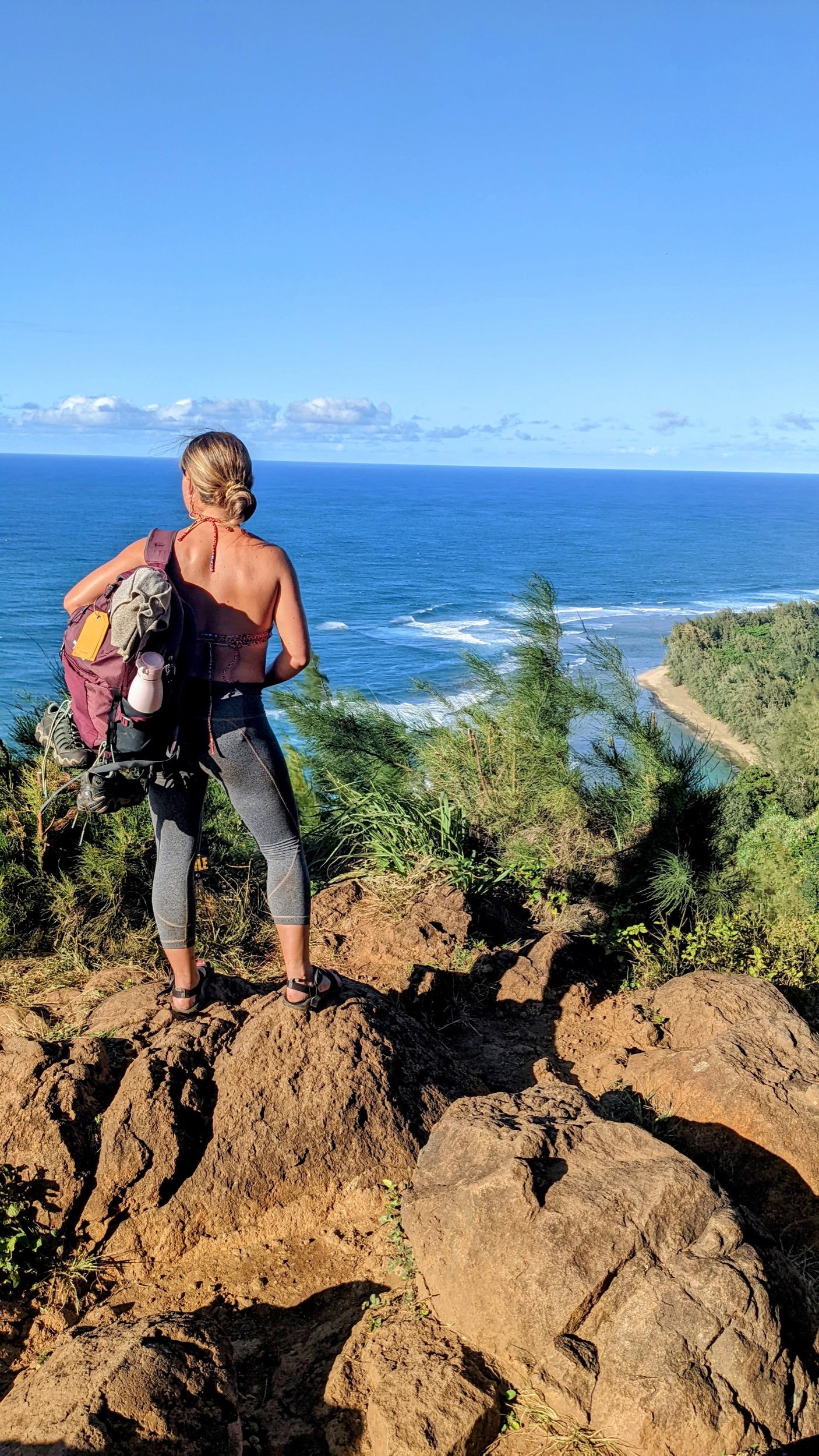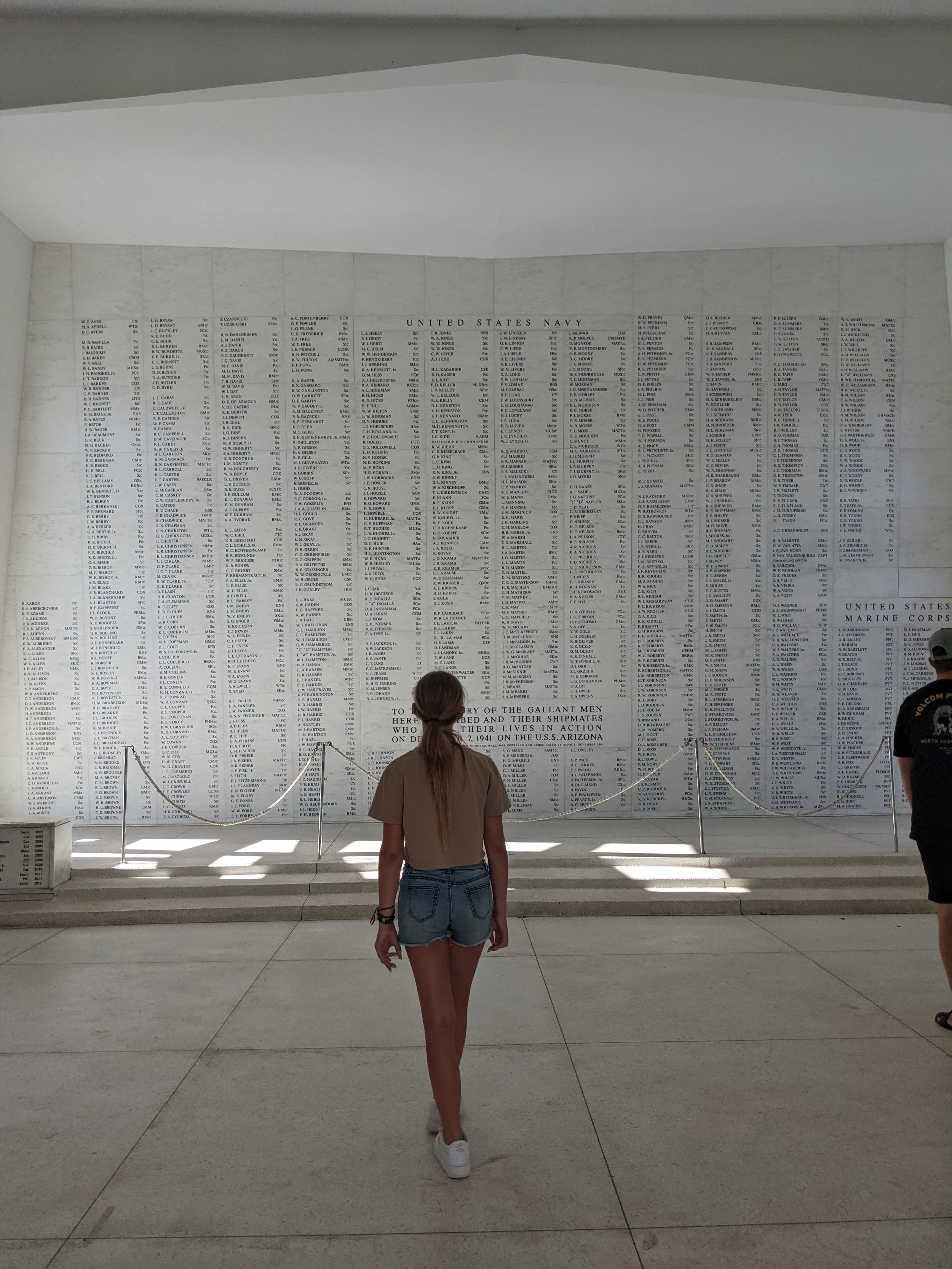Learning to surf, week 1: what not to do…
Why We Want Our Family to Learn to Surf
Not even 2 months into our official relationship, during the summer between first and second year of medical school, Joey and I went on an epic 3 part beach vacation together. We drove my BMW Z3 convertible to Pompano Beach, FL where we spent a week with Joey’s parents, including an infamous boat trip to Key Largo on the Searay. We then drove to Miami, flew to Acapulco, Mexico and took a 10 hour police escorted bus to Puerto Escondido in the Oaxaca region of Mexico with the goal of learning to surf. Since I was still in the relationship stage of proving my physical fitness and survival skills to my potential mate, I foolishly attempted to surf waves way too big and challenging, with only a 1 hour lesson in Maui in 2004 under my belt. With a combination of a massive amount of determination and an overall high level of physical fitness, I managed to catch a handful of waves and, most importantly, not die. Joey fared only slightly better than me. Since that time, neither of us has ever fully let go of our unrealized goal of learning to surf. We have been waiting for the sweet spot where we aren’t too old and our kids aren’t too young to give it another go. That time has come.
Preparing to learn to surf in Hawaii
In order to learn to surf, we planned a full month in what is arguably the birthplace of surfing. Early written accounts from European encounters with the native people of Hawaii give detailed descriptions of both men and women riding waves on wooden boards. There is evidence that this practice was performed in other Pacific island cultures as well, but the modern day version of surfing really was born here in Hawaii. Before our trip, we watched multiple videos on how to surf and Joey did extensive research on the best breaks and best board types for each of us. Given the number of days we planned to surf, it was substantially cheaper to buy boards than to rent them and we figured we could potentially resale them before we leave to mitigate the cost. We settled on a 7 foot soft top board for Gus from Honolulu Surf Co ($189), an 8 foot soft top Gerry Lopez funboard from Costco ($109) for Bailey and I, and a 10 foot 2 inch vintage South Point Epoxy Longboard bought used from Facebook marketplace ($200) for Joey and Wilson. I even drew eyes on the bottom of our boards to attempt to keep the sharks away and we purchased shark repellent bracelets for every member of the family (not sure if these do anything but it was worth a try). Up until this point, our decision making was good and I recommend doing all of these things if you want to learn to surf.
We felt we were set up for success; however, 6 surf breaks and 7 days later, we have made very little progress. Below are 3 lessons we have learned so far on what not to do.
1. Don’t try to teach your kids to surf if you don’t know how to surf yourself.
Looking back, I’m not sure why this seemed like a good idea. When we first started learning to snow ski and I was a beginner myself, I knew better. I sent my kids to ski school for 3 years in a row where an expert taught them the fundamentals of learning to ski while I spent the days on the slopes learning to ski myself. When we finally started skiing together, when Gus was 5, Bailey was 7, and Wilson was 9, we hired The Rev, a private instructor, to ski with us all day as well. We spend a lot of time in the water; swimming, water skiing, snorkeling, boogie boarding, cliff jumping, etc, and are very comfortable in the water and I can only retrospectively justify my decision based on this. Now I realize, however, that not hiring an instructor was the wrong move.
2. Don’t rely on just one surf forecast source and do check the latest predictions before heading anywhere to surf.
Surf forecasts are like the weather, you can read all the predictions you want, but the waves are unpredictable. Because of this, I recommend checking multiple sites (so far, I have found Magicseaweed.com to be the best here) and checking multiple times right up until the time you leave to go surfing. One day this week, we drove 50 minutes to a surf spot that, according to Surf-forecast.com 3 hours earlier, was supposed to have perfectly sized waves only to find a completely flat sea. Unfortunately, the waves on the north side of the island ended up being perfect for us that day but it was too late to switch gears.
3. Don’t take your kids out to surf before assessing the hazards yourself.
So far, 3 out of 5 of us have all jumped in together at each of the surf breaks to paddle out and surf. Even though we have read all of the info available on each break, there have been some surprises. Yesterday, for example, we paddled out with Gus to check out Publics, a beginner surf break on Waikiki. Although we had read the water was shallow in places, we didn’t realize how shallow. It was billed as a beginner surf break and the waves looked pretty reasonable from afar. On the first wave Gus and I tried to catch, however, we realized how powerful the waves actually were and quickly realized that there were multiple large coral heads hidden just below the surface of the water. As Gus and I got flipped off our boards and then pounded by the 2nd, 3rd, and 4th waves in the set, bumping into coral heads along the way it became very clear that this was not a safe place for us. As soon as we could, we hopped back on our boards and rode the waves into shore. Fortunately, Gus came out with only a scraped knee but I have lost a lot of sleep thinking about how much worse it could have been. In the future, I won’t be sending my kids out until I have fully assessed the situation myself.
Conclusions from our attempt at surfing
Being an optimist, I always like to look at the bright side, so I will conclude with the positives that have come from our first week of surfing.
No one died or got seriously injured. Gus says this is a pretty dim bright side, but I don’t agree. I always remember to be thankful for this at the end of every day.
Everyone has caught and stood up on at least 2 waves..
We are now familiar with 6 different surf breaks and have some idea of what size waves we need to surf them, where the dangers are and how to avoid them, and which ones to never try again.
We have all improved our paddle technique and gotten tons of exercise. I’m pretty sure we are all going to be ripped after this month. ;)
No one has shed a tear.
We now know we need an instructor and still have 4 more weeks to figure this out.
I hope this helps someone else avoid the mistakes we have made. If anyone has any additional experience and advice, please share them with us in the comments.
We love to read your comments below.
Enjoy our short video of our first week surfing.

